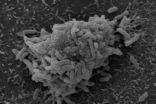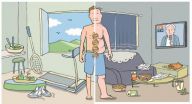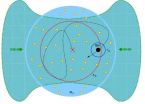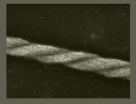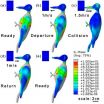(Press-News.org) New Rochelle, NY, August 11, 2014 -- Nearly 6% of all children and teens in the U.S. are severely obese, and the prevalence of severe obesity is increasing faster than that of moderate obesity or overweight. This is an alarming trend as about 90% of these youths will grow up to be obese adults. The serious health problems associated with severe obesity and the poor long-term prognosis and quality of life projected for these children and teens demand more serious consideration of safe and effective treatment options that go beyond diet and lifestyle modifications, as proposed in an Editorial published in Childhood Obesity, a peer-reviewed journal from Mary Ann Liebert, Inc., publishers. The article is available free on the Childhood Obesity website at http://online.liebertpub.com/doi/full/10.1089/chi.2014.1041 until September 12, 2014.
In "Pediatric Severe Obesity: Time to Establish Serious Treatments for a Serious Disease," Stephen R. Daniels, MD, PhD, University of Colorado School of Medicine and Children's Hospital Colorado (Aurora), and Aaron S. Kelly, PhD, University of Minnesota Medical School and Children's Hospital (Minneapolis), note that while healthy lifestyle changes made during childhood may be quite helpful in weight reduction, these less intensive types of approaches tend to be less effective in treating severely obese teenagers. According to the authors, better access to specialty medical weight management programs, pharmacotherapy, and weight loss surgery are all important components of a more comprehensive strategy to combat severe obesity among teens.
"Drs. Daniels and Kelly are performing a vital service by directing our attention to this serious and increasingly prevalent problem," says David L. Katz, MD, MPH, Editor-in-Chief of Childhood Obesity and Director, Yale University Prevention Research Center. "We need commensurately serious solutions which I believe can include lifestyle interventions, but only of adequate scope and intensity. Just as lifestyle has been proven a worthy alternative to coronary bypass surgery, our sons and daughters deserve alternatives to bariatric surgery in combating this problem that our culture has handed them."
INFORMATION:
About the Journal
Childhood Obesity is a bimonthly journal, published in print and online, and the journal of record for all aspects of communication on the broad spectrum of issues and strategies related to weight management and obesity prevention in children and adolescents. The Journal includes peer-reviewed articles documenting cutting-edge research and clinical studies, opinion pieces and roundtable discussions, profiles of successful programs and interventions, and updates on task force recommendations, global initiatives, and policy platforms. It reports on news and developments in science and medicine, features programs and initiatives developed in the public and private sector, and includes a Literature Watch. Tables of content and a sample issue may be viewed on the Childhood Obesity website at http://www.liebertpub.com/chi.
About the Publisher
Mary Ann Liebert, Inc., publishers is a privately held, fully integrated media company known for establishing authoritative medical and biomedical peer-reviewed journals, including Metabolic Syndrome and Related Disorders, Population Health Management, Diabetes Technology & Therapeutics (DTT), and Journal of Women's Health. Its biotechnology trade magazine, Genetic Engineering & Biotechnology News (GEN), was the first in its field and is today the industry's most widely read publication worldwide. A complete list of the firm's 80 journals, newsmagazines, and books is available on the Mary Ann Liebert, Inc., publishers website at http://www.liebertpub.com.
Mary Ann Liebert, Inc.
140 Huguenot Street
New Rochelle, NY 10801-5215
http://www.liebertpub.com
Phone:(914) 740-2100
(800) M-LIEBERT
Fax: (914) 740-2101
More intensive interventions needed to combat severe obesity in teens
2014-08-11
ELSE PRESS RELEASES FROM THIS DATE:
Pairing old technologies with new for next-generation electronic devices
2014-08-11
UCL scientists have discovered a new method to efficiently generate and control currents based on the magnetic nature of electrons in semi-conducting materials, offering a radical way to develop a new generation of electronic devices.
One promising approach to developing new technologies is to exploit the electron's tiny magnetic moment, or 'spin'. Electrons have two properties – charge and spin – and although current technologies use charge, it is thought that spin-based technologies have the potential to outperform the 'charge'-based technology of semiconductors for ...
Sugary bugs subvert antibodies
2014-08-11
A lung-damaging bacterium turns the body's antibody response in its favor, according to a study published in The Journal of Experimental Medicine.
Pathogenic bacteria are normally destroyed by antibodies, immune proteins that coat the outer surface of the bug, laying a foundation for the deposition of pore-forming "complement" proteins that poke lethal holes in the bacterial membrane. But despite having plenty of antibodies and complement proteins in their bloodstream, some people can't fight off infections with the respiratory bacterium Pseudomonas aeruginosa. And chronic ...
Tackling liver injury
2014-08-11
A new drug spurs liver regeneration after surgery, according to a paper published in The Journal of Experimental Medicine.
Liver cancer often results in a loss of blood flow and thus oxygen and nutrients to the liver tissue, resulting in deteriorating liver function. Although the diseased part of the liver can often be surgically removed, the sudden restoration of blood flow to the remaining liver tissue can trigger inflammation—a process known as ischemia reperfusion injury (IRI). IRI results in part from the deposition of immune proteins called complement on the surface ...
'Seeing' through virtual touch is believing
2014-08-11
Visual impairment comes in many forms, and it's on the rise in America.
A University of Cincinnati experiment aimed at this diverse and growing population could spark development of advanced tools to help all the aging baby boomers, injured veterans, diabetics and white-cane-wielding pedestrians navigate the blurred edges of everyday life.
These tools could be based on a device called the Enactive Torch, which looks like a combination between a TV remote and Captain Kirk's weapon of choice. But it can do much greater things than change channels or stun aliens.
Luis ...
Aberrant mTOR signaling impairs whole body physiology
2014-08-11
The protein mTOR is a central controller of growth and metabolism. Deregulation of mTOR signaling increases the risk of developing metabolic diseases such as diabetes, obesity and cancer. In the current issue of the journal Proceedings of the National Academy of Sciences, researchers from the Biozentrum of the University of Basel describe how aberrant mTOR signaling in the liver not only affects hepatic metabolism but also whole body physiology.
The protein mTOR regulates cell growth and metabolism and thus plays a key role in the development of human disorders. In the ...
Not only in DNA's hands
2014-08-11
Blood stem cells have the potential to turn into any type of blood cell, whether it be the oxygen-carrying red blood cells, or the many types of white blood cells of the immune system that help fight infection. How exactly is the fate of these stem cells regulated? Preliminary findings from research conducted by scientists from the Weizmann Institute and the Hebrew University are starting to reshape the conventional understanding of the way blood stem cell fate decisions are controlled thanks to a new technique for epigenetic analysis they have developed. Understanding ...
All-you-can-eat at the end of the universe
2014-08-11
At the ends of the Universe there are black holes with masses equaling billions of our sun. These giant bodies – quasars – feed on interstellar gas, swallowing large quantities of it non-stop. Thus they reveal their existence: The light that is emitted by the gas as it is sucked in and crushed by the black hole's gravity travels for eons across the Universe until it reaches our telescopes. Looking at the edges of the Universe is therefore looking into the past. These far-off, ancient quasars appear to us in their "baby photos" taken less than a billion years after the Big ...
Nanocubes get in a twist
2014-08-11
Nanocubes are anything but child's play. Weizmann Institute scientists have used them to create surprisingly yarn-like strands: They showed that given the right conditions, cube-shaped nanoparticles are able to align into winding helical structures. Their results, which reveal how nanomaterials can self-assemble into unexpectedly beautiful and complex structures, were recently published in Science.
Dr. Rafal Klajn and postdoctoral fellow Dr. Gurvinder Singh of the Institute's Organic Chemistry Department used nanocubes of an iron oxide material called magnetite. As ...
How the woodpecker avoids brain injury despite high-speed impacts via optimal anti-shock body structure
2014-08-11
Designing structures and devices that protect the body from shock and vibrations during high-velocity impacts is a universal challenge.
Scientists and engineers focusing on this challenge might make advances by studying the unique morphology of the woodpecker, whose body functions as an excellent anti-shock structure.
The woodpecker's brain can withstand repeated collisions and deceleration of 1200 g during rapid pecking. This anti-shock feature relates to the woodpecker's unique morphology and ability to absorb impact energy. Using computed tomography and the construction ...
Megascale icebergs run aground
2014-08-11
Scientists from the Alfred Wegener Institute, Helmholtz Centre for Polar and Marine Research (AWI) have found between Greenland and Spitsbergen the scours left behind on the sea bed by gigantic icebergs. The five lineaments, at a depth of 1,200 metres, are the lowest-lying iceberg scours yet to be found on the Arctic sea floor. This finding provides new understanding of the dynamics of the Ice Age and the extent of the Arctic ice sheet thousands of years ago. In addition, the researchers could draw conclusions about the export of fresh water from the Arctic into the ...

